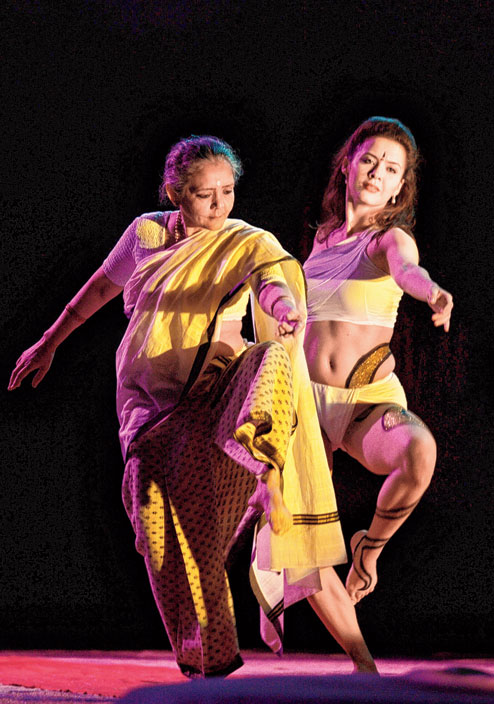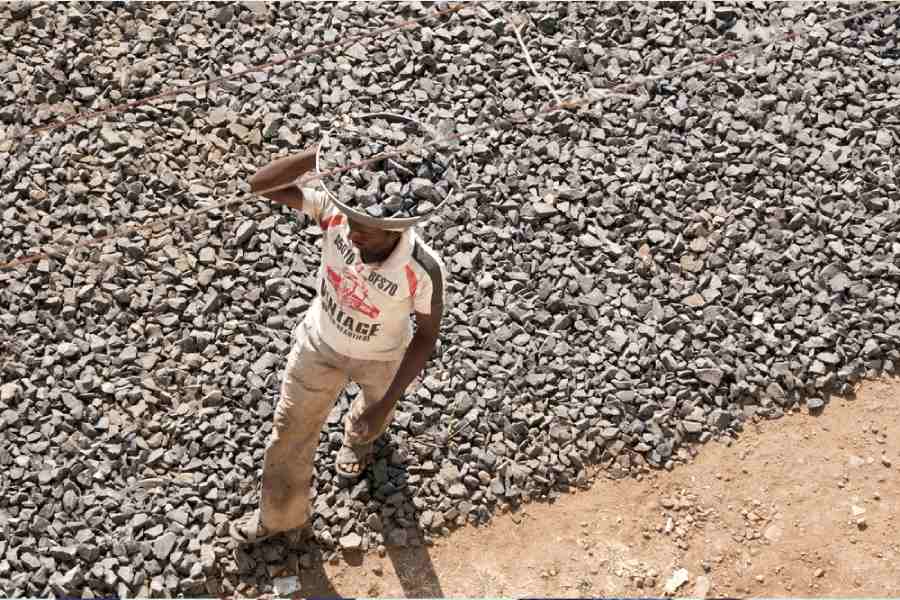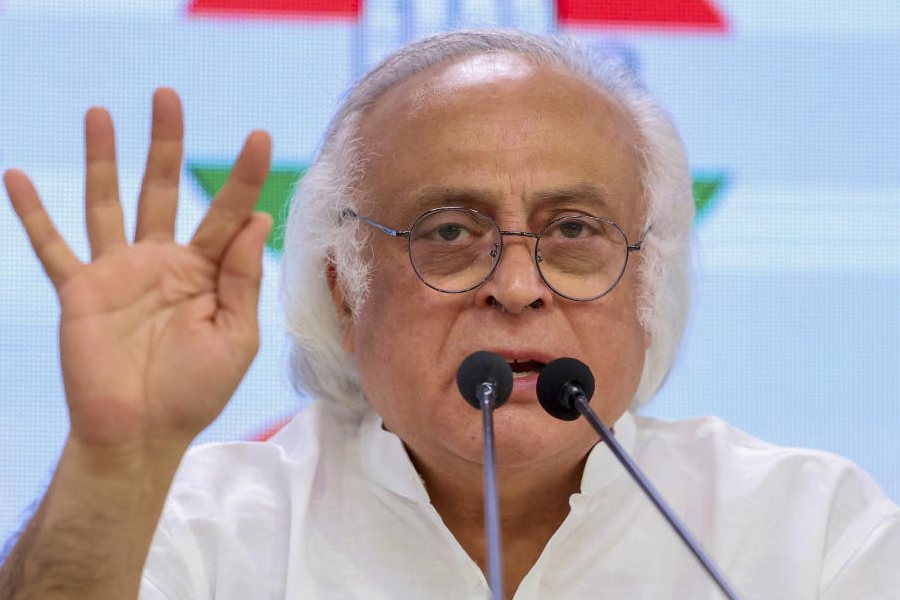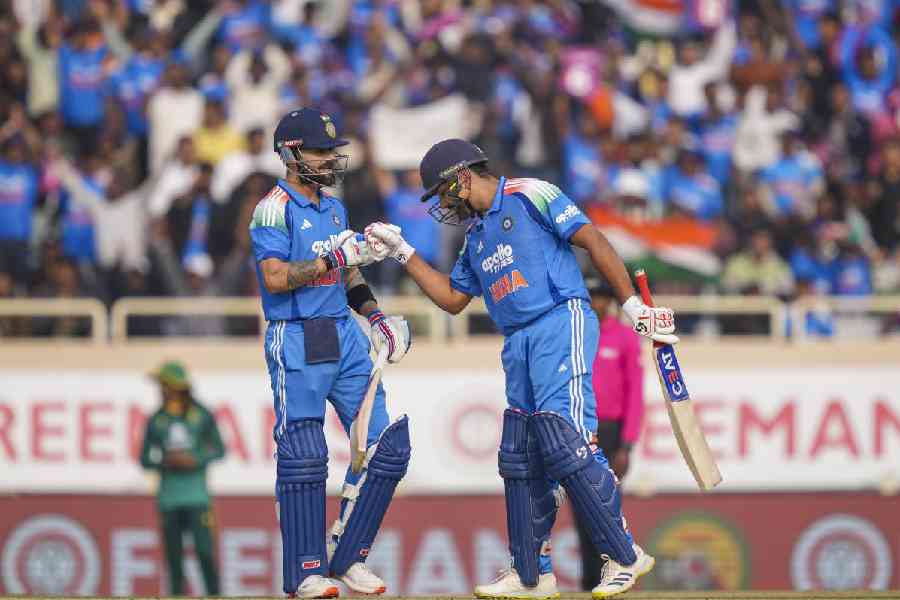 |
| Daksha Sheth and Isha Sharvani in a scene from Shiva Shakti |
At 62, dancer-choreographer Daksha Sheth tells t2, “Don’t carry your age on your shoulders. Don’t think of your age, you just do it.” More famous among youngsters as the mother of Isha Sharvani, the girl who mesmerised all with her fluid body movements in Jhalak Dikhhla Jaa on Colors, Daksha is excited about returning to the Calcutta stage after a long gap. A t2 chat with Daksha on Shiva Shakti and the philosophy of her dance....
You are coming to Calcutta after how many years?
I really cannot remember. It’s been a long time, many years in fact. One thing about Calcutta — the audience is just the best audience I have ever come across. I can’t remember when it was exactly, must be more than 10 to 15 years back. We did perform Sarpagati but I have absolutely no memory of when and where. And another time I had performed a very short piece for a Kathak festival, many years ago. There was a huge crowd and the organisers had to open all the doors of the auditorium to accommodate them. I hope the same happens this time! I am looking forward because Bengalis are known to be art lovers and Calcutta has an amazing audience for all kinds of art forms — whether it’s music, dance, theatre, folk art…. You people are very famous art lovers. My whole group is very excited to be there!
 |
| An aerial act from the show |
What is Shiva Shakti all about?
It will be quite a journey. I would call our work an experience rather than a performance. To be in our show, to be with us on the journey in that time frame is an experience. It’s a journey through the subterranean, terrestrial and transcendental — the three states of mind and also life, death and rebirth. It engages three different realms — consciousness, subconsciousness and superconsciousness. Shiva is the male principal, which is pure consciousness and presented in the show as a white triangle facing upwards. Shakti is the dynamic female energy, which is presented as a downward-facing red triangle. And this universe, in all its diversity, arises from the interplay of these two principles. That is Shiva Shakti.
What stopped you from coming to Calcutta more often?
I don’t know! I think we need more Trishas (Trisha Dube of Inspirago Infinity) to invite us to Calcutta to perform. It’s also quite amazing that we are getting not one show, but two shows, which is a rare thing in India. In other places, it’s only a night’s performance. We are all thankful to The Telegraph and Inspirago Infinity to have us at Calcutta.
 |
| “I took this picture of Daksha and Isha at the Indian Coffee House, way back when! We had gone browsing for second-hand books at the College Street market there, and dropped in at the Coffee House for refreshments,” said Devissaro, Daksha’s husband and the director of Shiva Shakti |
What is Isha’s role in the production?
Isha represents Shakti in the show and my son Tao (Issaro) is Shiva. Shiva Shakti has mother-daughter choreography and father-son (Devissaro and Tao) music. So it’s quite a unique show in that sense.
You have used the rope technique of Mallakhamba (a traditional Indian sport) a lot in Shiva Shakti...
Isha does one solo, which is used on a rope Mallakhamba. But the interesting part in our work is that we learn the tradition, but then we completely transform the tradition in such a way that it is Mallakhamba and yet it is not. The same way I have used the rhythm of Kathak, used my experience from 25 years of Kathak training but there is no Kathak. Rope is there but there is no Mallakhamba. It’s an absolutely transformed dance by Isha.
Shiva Shakti has a lot of aerial action. Does it have specific technical requirements?
We are 14 performers on stage and it’s absolutely a marathon effort to set up the stage. Just the mechanism to do the aerial dance takes a lot of effort. It cannot be done in any auditorium. Also, we are putting up a structure of our own. When you suspend anything, it needs a structure to hang from. There is quite a lot of aerial work in Shiva Shakti. It’s a massive amount of rigging (the set-up of ropes that support the aerial dance) and is very extensive. Technically it’s a very demanding production. And it has very specific requirements. We will be carrying everything from Kerala — almost 800kg of luggage with us. I don’t think anybody in India has this kind of extensive technical work for a dance show. And I am not even talking about the sets.
Tantra, yajna, rituals, mythology, spiritualism — these recur as themes in most of your productions. Are you a very spiritual person?
Since the age of 16, my connection with philosophy or the spiritual world began with Ramakrishna Paramhansa. When I just finished school, my father gave me the book on Ramakrishna Paramhansa — Kathamrita. And that was a turning point in my life. I became very interested in philosophy, spirituality, meditation. And that’s why I am always attracted towards spiritual journeys. Devissaro also comes from a very strong spiritual background. So we are very connected to philosophical themes and that is something not just very close to us but almost a part of our being.
You use a lot Vedic chants in your productions...
I love Sanskrit as a language. I find the power of the Sanskrit language unparalleled. I love chanting. So I studied Sanskrit and Vedic chants at Vrindavan. If you do Vedic chanting properly, it takes you to a different level as a human being. And I don’t deny that power.
You run Daksha Sheth Dance Company at Natyashram in Kerala. What are the criteria to be a student there?
Very few people can sustain in our place. It’s very easy to say you want to be in a beautiful place and learn dance. But people get very bored here very fast. You have to have a different set of mind if you want to live in an isolated place like ours. We just do music and dance and that’s it. It is nothing but a sadhana for us.
What is your message to those who want to pursue contemporary dance in India?
I don’t know what to say because time is changing very fast. The only thing I tell my children is follow what you want to do with all your might and honesty. That is not an easy thing to do. Because most people don’t know what they want. It needs clarity of thought. One has to seek inner growth. If you can just make your life a journey for your inner growth through anything — through music, dance, art... even through business, that is enough. It depends on what you want. Do whatever you do with utmost honesty and sincerity. That sincerity will bring everything to you.
What: Shiva Shakti, in association with t2
Where: Kala Mandir
When: October 25 and 26, at 7pm
Expect: A spectacular dance performance by Daksha Sheth Dance Company, led by Daksha Sheth and her dancer-actress daughter Isha Sharvani. Shiva Shakti combines music and movement, involving nuances from different dance forms of India. The 60 minute-plus piece has travelled to 30 countries and more than 25 international festivals.
Tickets: Passes for Rs 1,000, Rs 700 and Rs 400 are available on www.indianstage.in
Organiser speak: “If you were a fan of Isha’s performance on Jhalak Dikhhla Jaa, then wait till you see her perform live. You will be left speechless,” said Trisha Dube, founder and director of Inspirago Infinity.
Sibendu Das










